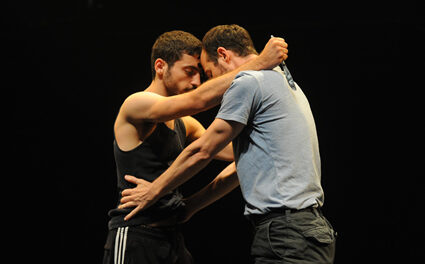There was no sign that gas price uncertainty caused any diminution of the audience in War Memorial Auditorium for the September 22 opening concert of the Greensboro Symphony Orchestra under the direction of Dmitry Sitkovetsky. Both this Masterworks series and the Sitkovetsky and Friends chamber music series will have major works of Beethoven as an over-arching theme. Few “cobwebs” from the summer hiatus were audible in the focused playing. To the delight of this critic, the conductor retains the old style of antiphonal seating with the violins divided on the left and right of the podium, violas and cellos behind them, and the double basses along the left stage wall. The resulting clarity of musical lines paid handsome dividends throughout the evening.
Forest depths, sounds of the hunt, and lurking evil are conjured up in the Overture to Carl Maria von Weber’s opera Der Freischütz. From its quiet, slow opening, Sitkovetsky closely molded the dynamics, maintaining tension as well as good balance between the strings and the brass. The horns, led by Robert Campbell, were almost flawless as their well-blended chorus floated over murmuring strings. Vividly characterized woodwind solos – – particularly from clarinetist Kelly Burke and oboist Ashley Barret – shared melodies with the strings. Malevolence lying in wait was suggested chillingly by the somber trombone’s echo of a familiar melody.
Romanian violinist Eugen Tichindeleanu is a promising 24-year-old artist* Sitkovetsky “discovered” while he was president of the jury that awarded the 2003 International George Enescu Competition prize. Although he had the score distantly placed on a stand before him, he never gave the impression of being glued to the page as he took up his violin for the challenging “Scottish Fantasy,” Op. 46, by Max Bruch. He played with a good, warm tone that was well projected. A few fleeting notes aside, his intonation was fine. I suspect that the repeat (on 9/24) and the Elon University outing (on 9/25) found Tichindelenau playing with still more ease and assurance. He took few risks, and his performance ran a little hot and cold. His use of vibrato and his phrasing were tasteful. The orchestra was superbly balanced by Sitkovetsky, who wove a glowing accompaniment for this gorgeous piece. The haunting extended harp solo was played by Helen Rifas.
Sitkovetsky’s direction of Beethoven’s Symphony No. 3 in E-flat, Op. 55 (“Eroica”), was dynamic, and there was a constant sense of forward motion that was not lost, even in the slow movement. The tempos were sensible, never sounding rushed or driven as some “Early Music” approaches can. Here, the music was given room to breathe naturally, and details were subordinated to a firm over-arching view of the work. Again the balances between the strings and the brass were excellent. Antiphonal seating of the string choirs naturally exposed contrapuntal lines as well as contrasts within the orchestra’s middle voices – the cellos and violas and the woodwinds as well. More than at other recent performances, this was underpinned by riveting strokes and pizzicato rumblings from the sepulchral double-bass section, led by John P. Spuller, that were as much physical as acoustical. In addition to the fine principal players already credited in the Weber, exemplary solos were given by flutist Debra Reuter-Pivetta and timpanist John Beck, and precise ensemble and full warm tone were displayed during several significant solos by the cello section led by Beth Vanderborgh.
*Edited/corrected 10/5/05 – with thanks to an observant reader!











